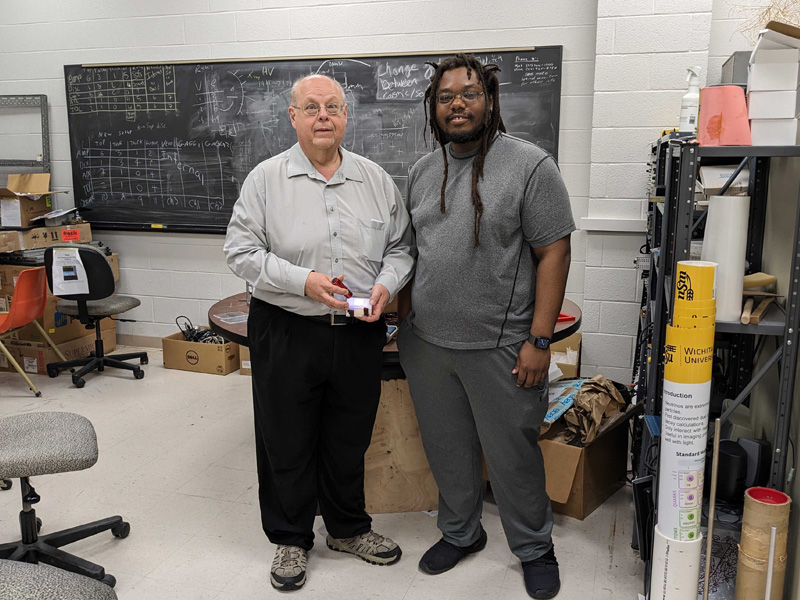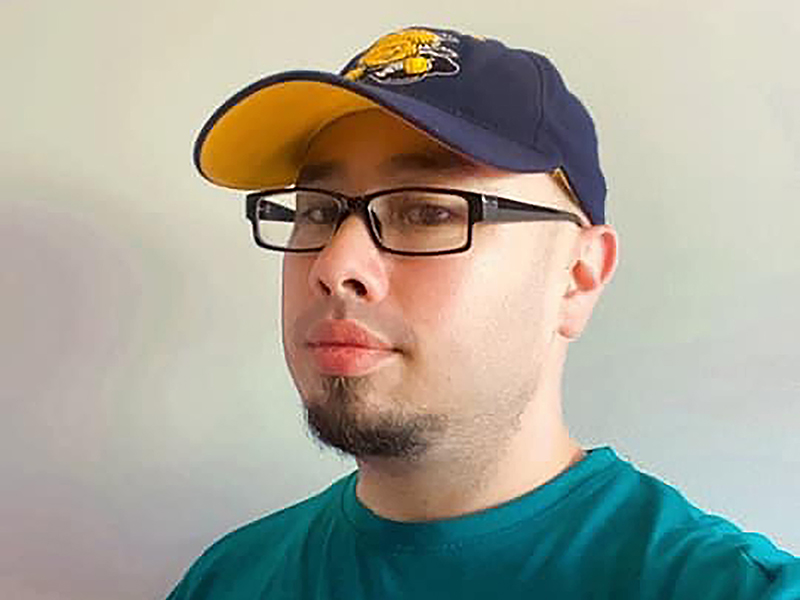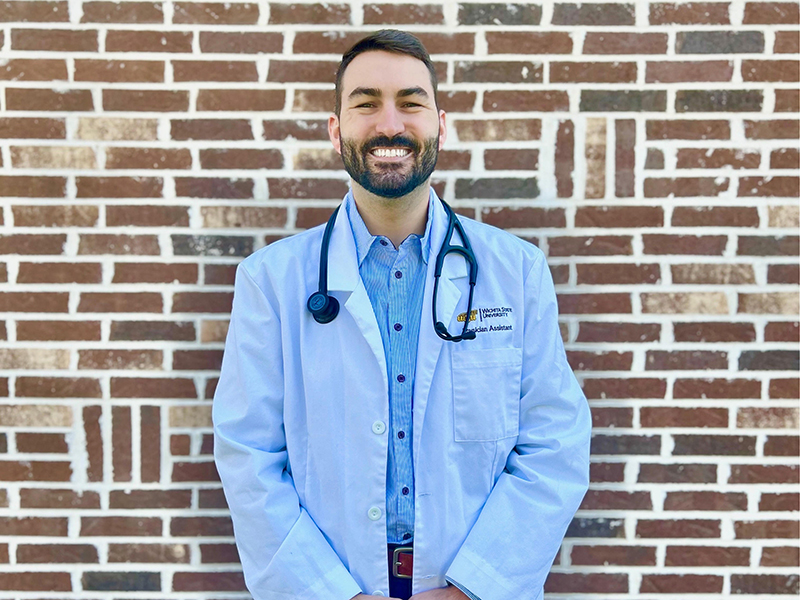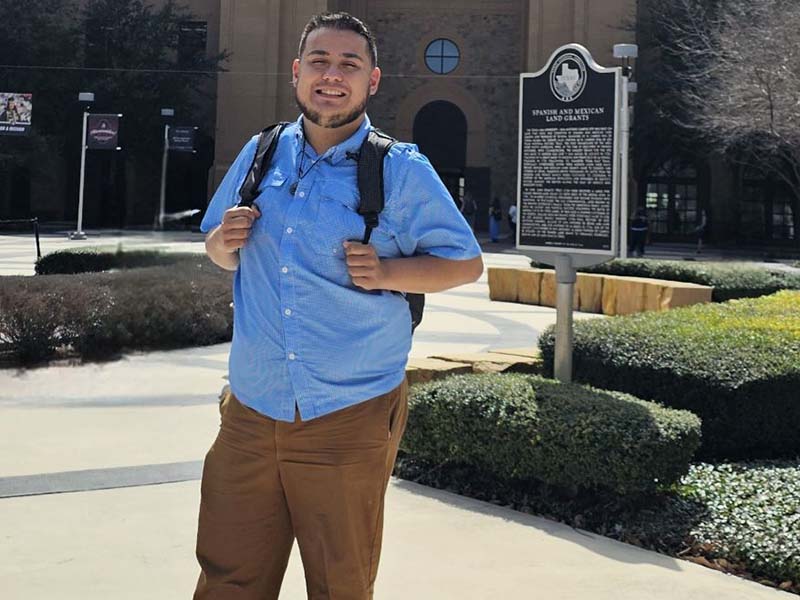Three Â鶹ĆĆ˝â°ć State University students have secured the prestigious Graduate Research Fellowship from the National Science Foundation — an award worth $159,000 over three years.
The students — Anthony Ciletti, a senior in mechanical engineering; Reilly Jensen, who is pursuing a master’s degree in biomedical engineering; and Max Proctor, a second-year master’s student studying biological sciences — were chosen among more than 12,000 students nationwide who applied for the fellowship.
According to the NSF, the Graduate Research Fellowship Program “recognizes and supports outstanding graduate students who are pursuing full-time research-based master's and doctoral degrees in science, technology, engineering and mathematics or in STEM education.”
Anthony Ciletti
Ciletti came to Â鶹ĆĆ˝â°ć State from Lucas, Texas, about an hour outside of Dallas. Among the 13 colleges he visited and considered, he chose WSU for its connections to the aircraft industry and the opportunities available through the National Institute for Aviation Research.
“My visit here turned WSU from another university I didn’t even know existed into my top choice,” he said.
During his first year at WSU, Ciletti connected with Dr. Bhisham Sharma, former WSU assistant professor of aerospace engineering. Sharma invited Ciletti to work on the research being done at the Mechanics, Acoustics and Dynamics Laboratory (MADLab). The project focused on using 3D printing to study new designs and structures for materials that absorb sound.
“In my first year working with Dr. Sharma, I wore a lot of hats, learned a lot and assisted with other projects. I worked on 3D printing, topology creation software, acoustic measuring equipment, image processing and acoustic analysis,” Ciletti said.
Eventually, Ciletti settled into his own research focusing on developing a method to predict the acoustic performance of non-periodic porous materials using 3D representations, aiming to streamline the design process for specific applications.
“The research I’m doing is certainly quite different from the traditional focuses of aerospace in the big four — aerodynamics, structures, propulsion and stability and control. But advancing aerospace design is a multi-disciplinary effort, where every aspect of flight and operations needs significant attention and specialized solutions,” he said. “I hope the work I’m doing will be a small part of what makes the next generation of aircraft faster, safer, greener and — in my case — quieter.”
Ciletti also works with NASA on his research. He is an Experiential Aeronautics Fellow with NASA in Kansas and has been an intern at NASA Langley’s Liner Physics Team.
“Anthony's research bridges the gap between fundamental materials science and real-world applications, aiming to create quieter, more efficient and ultimately safer airplanes,” said Dr. Anthony Muscat, dean of WSU’s College of Engineering.
Ciletti will graduate from Â鶹ĆĆ˝â°ć State with a bachelor’s degree in May and will then attend graduate school.
Reilly Jensen
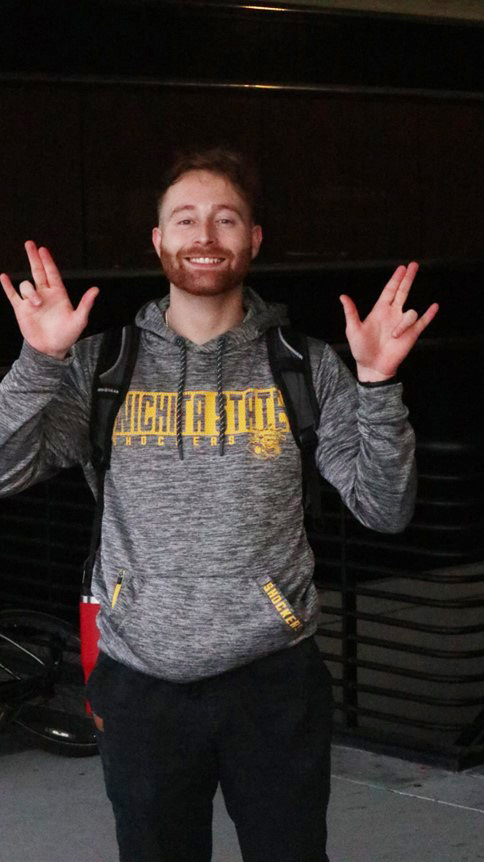
It was his grandmother who inspired Reilly Jensen’s proposal on his Graduate Research Fellowship application. Through his research, Jensen wants to use a radio frequency resonator alongside artificial intelligence to detect and classify cerebral strokes in a rabbit model.
“My grandmother suffered from a stroke around this time last year. Though she had a wonderful recovery, I realized how critical the time from the onset of stroke to treatment is,” Jensen said. “If a more rapid method for detecting and classifying strokes can be developed, more of the 13.7 million strokes reported every year will have better outcomes.”
Jensen came to Â鶹ĆĆ˝â°ć State from Buhler, Kansas, to pursue his graduate studies after earning a bachelor’s degree from Kansas State University.
“I was impressed with the facilities, faculty and resources available to the students when I first toured the campus. Additionally, I get the opportunity to be closer to family,” he said.
His stroke research will involve microwave sensing and imaging, animal models of cerebral stroke, machine and deep learning methods, and the impact of cerebral strokes on public health.
"Reilly’s research aims to develop a rapid, easy-to-use microwave sensor for stroke detection, potentially improving patient outcomes by expediting diagnosis and treatment,” Muscat said.
After he completes his master’s research, Jensen said he’ll pursue his Ph.D. and then possibly work with brain-computer interfaces.
“Ultimately, I hope to contribute to research which will reduce suffering in the world via engineering principles,” he said.
Max Proctor
When someone asked Dr. Mary Liz Jameson, professor of biological sciences, if she’d heard Max Proctor’s good news, she had to pause and ask, “Let’s see: Which of Max’s exciting news are you referring to?”
Not only has Proctor earned the NSF’s Graduate Research Fellowship, but he has also completed his thesis and earned a fellowship in Taiwan to study Hercules beetles.
Beetles are a big deal for Proctor. In fact, they’re the reason he came to WSU.
“I came to Â鶹ĆĆ˝â°ć State so I could work with Dr. Mary Liz Jameson,” he said. “Dr. Jameson is a highly regarded specialist of scarab beetles, which are my favorite. Dr. Jameson has a reputation for being an amazing advisor so I knew her lab would be the perfect place.”
Proctor’s research focus is on the evolution and ecology of animal weapons, and he examines how larval diet and temperature alter the expression of horns in the dung beetle.
“Many scarab beetles have elaborate horns and weapons that make you question how could nature get so crazy!” he said.
For the NSF award, Proctor proposed “to determine why certain animal species evolved multiple different kinds of weapons.”
For that, he will travel to Taiwan to study the Dicronocephalus wallichii, or the reindeer beetle, which “uses both horns and extended forelimbs to fight.”
“The research Max proposed for his GRPF is his big dream – since the first day that I spoke with him about his aspirations,” said Jameson. “It is important to dream big.”
The NSF award will give Proctor an opportunity to focus completely on his research, said Dr. Andrew Hippisley, dean of the Fairmount College of Liberal Arts and Sciences.
The highly competitive award will provide Proctor with the support needed to pursue his passion: three years of financial aid that includes an annual stipend of $37,000.
“What this means is that Max can focus 100% on his education and make a strong start to what looks like an exciting research program. I am thrilled for him,” Hippisley said.
About Â鶹ĆĆ˝â°ć State University
Â鶹ĆĆ˝â°ć State University is Kansas' only urban public research university, enrolling more than 23,000 students between its main campus and WSU Tech, including students from every state in the U.S. and more than 100 countries. Â鶹ĆĆ˝â°ć State and WSU Tech are recognized for being student centered and innovation driven.
Located in the largest city in the state with one of the highest concentrations in the United States of jobs involving science, technology, engineering and math (STEM), Â鶹ĆĆ˝â°ć State University provides uniquely distinctive and innovative pathways of applied learning, applied research and career opportunities for all of our students.
The Innovation Campus, which is a physical extension of the Â鶹ĆĆ˝â°ć State University main campus, is one of the nation’s largest and fastest-growing research/innovation parks, encompassing over 120 acres and is home to a number of global companies and organizations.
Follow Â鶹ĆĆ˝â°ć State on social media:


